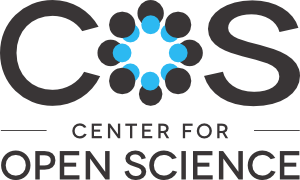Location
Our mission is to increase openness, integrity, and reproducibility of research.
These are core values of scholarship and practicing them is presumed to increase the efficiency of acquiring knowledge.
For COS to achieve our mission, we must drive change in the culture and incentives that drive researchers’ behavior, the infrastructure that supports their research, and the business models that dominate scholarly communication.
This culture change requires simultaneous movement by funders, institutions, researchers, and service providers across national and disciplinary boundaries. Despite this, the vision is achievable because openness, integrity, and reproducibility are shared values, the technological capacity is available, and alternative sustainable business models exist.
COS's philosophy and motivation is summarized in its strategic plan and in scholarly articles outlining a vision of scientific utopia for research communication and research practices.
Because of our generous funders and outstanding partners, we are able to produce entirely free and open-source products and services. Use the header above to explore the team, services, and communities that make COS possible and productive.
Members:
Resources
Displaying 276 - 280 of 447Understanding determinants of farmers’ investments in, and impacts of, soil and water conservation in Ethiopia: review and synthesis [Abstract only]
Although there has been a considerable effort to reduce soil erosion and improve land productivity in Ethiopia, farmers’ investments in SWC remain limited. There is a long and rich tradition of empirical research that seeks to identify the determinants that affect farmers’ investments in SWC practices. Nevertheless, the results regarding these determinants have been inconsistent and scattered. Moreover, the impacts of different SWC practices have not been reviewed and synthesized.
Foreign Direct Investments and trade in agriculture: an incomplete contracts approach
Despite the attention given in recent years to the growth of foreign land acquisitions, there have been few studies investigating the pattern of recent Foreign Direct Investment (FDI) in agriculture and the ones that have are mostly focused on the locational drivers of FDI. This paper explores how the contractual features of transactions of agricultural products affect the “internalization” decision of firms, that is, the choice trade/FDI.
STRUCTURAL CHANGES OF LAND-USE, URBANIZATION AND AGRICULTURAL LAND-USE INTENSITY IN MOUNTAINS: EVIDENCES FROM JAMMU & KASHMIR-INDIA
This study investigates dynamics of land-use shifts, agricultural land-use, and its intensity in relation with urbanization and other factors in Jammu & Kashmir, a mountainous state of India. Results revealed an unfavourable increasing trend in the undesirable ecology class (barren) and declining trend in desirable land-use (forests, pastures and miscellaneous trees) which are likely to have serious long-term ecological implications. Inter-sectoral budgeting analysis revealed that shifts in land are occurring from desirable towards undesirable ecological sector.
Valuation of water in large-scale agricultural land investments in Mali: Efficiency and equity trade-offs
Recent large-scale investments in agricultural land that are coupled with irrigation present opportunities for increased food production in sub-Saharan Africa. However, to achieve this objective two management issues must be addressed: efficient water use in the face of a looming water scarcity and equity in the sharing of the resource between large-scale investors and smallholder farmers.
GLOBAL CHANGES IN HARVESTED AREA IN CORN, SUGARCANE AND OILSEEDS: THE ECONOMETRIC ESTIMATION OF THE ROLE OF BIOFUEL PRODUCTION, FOREIGN DIRECT INVESTMENT, INCOME AND POPULATION GROWTH
Global harvested area of crops has expanded (+8%) in the period of 2004-2011. Nevertheless, some crops such as maize, sugarcane, and oilseeds expanded area more rapidly than the average rise. Although, some economists attribute this effect to biofuel production, economy also has encouraged expansion in cropland to satisfy food demand. This paper analyzes the impact that biofuel production and economic variables has had on harvested area for corn, sugar, and oilseeds.


